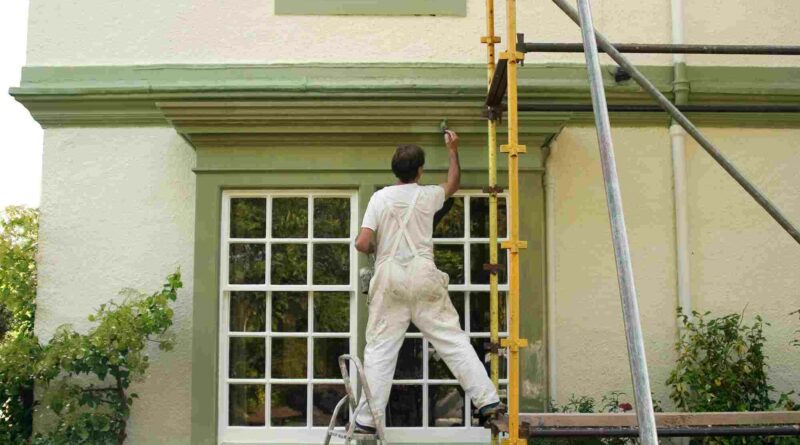The Process of Plastering Over Artex | Reliable Plasterers Bournemouth
Artex was once the go-to option for adding texture to ceilings and walls. But as trends have evolved, many homeowners now seek smooth, modern finishes. Plastering over Artex is a straightforward process when done by professionals, but it requires a specialized approach to ensure a flawless result. If you’re considering transforming your textured surfaces, here’s a comprehensive guide to help you understand what to expect from start to finish.
Why Plaster Over Artex?
Covering Artex is a popular choice for those who prefer smooth walls and ceilings, especially in spaces being modernized. Plastering services are highly effective for transforming these textured surfaces into sleek, stylish areas that enhance the room’s overall look. Plus, plastering offers a safe way to cover older Artex surfaces, which may contain asbestos, a hazardous material found in Artex produced before 1985. Professional plasterers use protective methods and techniques to ensure that any work done is secure and long-lasting.
Step 1: Preparing the Artex Surface
Preparation is the foundation of any successful plastering service. Before plastering over Artex, the surface must be assessed to determine its condition and the type of texture present.
- Inspection and Surface Evaluation
Professionals will first inspect the Artex for any underlying issues. Any areas with cracks, loose sections, or visible damage are noted, as these need to be repaired or reinforced before plastering. - Smoothing High Points
If the Artex texture is very pronounced, it’s often best to sand down the high points. This step ensures a more level surface, reducing the amount of plaster needed to cover the pattern. However, sanding is done carefully to prevent any dust release, particularly if there’s a chance the Artex contains asbestos. - Priming the Surface
Applying a bonding agent or primer is essential. This step improves the adherence of the plaster to the Artex surface, helping it to stay in place over time.
Step 2: Applying the First Layer of Plaster
Once the surface is ready, it’s time to start with the plastering process. This first coat serves as the base layer and helps fill in the Artex texture.
- Mixing the Plaster
The right mix is essential for a successful application. Professionals often use a specific plaster blend suited to cover textured surfaces like Artex. The goal is a consistency that’s thick enough to adhere but still workable. - Applying the Base Layer
Using a trowel, the plasterer will begin to apply the first layer across the entire Artex surface. This layer is thicker than usual to help fill in the textured patterns. - Smoothing and Leveling
After the first coat, plasterers use specialized tools to smooth and level the surface, ensuring even coverage. This is crucial for achieving a flat, uniform appearance once the job is complete.
Step 3: Adding a Second Coat
After the initial layer has dried, a second layer of plaster is added. This coat creates a seamless, polished look that hides the Artex texture completely.
- Ensuring an Even Finish
The second coat is applied in a thinner layer to perfect the finish. It smooths out any inconsistencies from the first coat, creating a flawless appearance. - Final Smoothing Techniques
Professionals use various smoothing techniques and tools to create a polished finish on the second layer. This step ensures that no texture or unevenness is visible, leaving you with smooth, stylish walls or ceilings. - Edges and Details
Special attention is paid to edges, corners, and any detailing areas to maintain consistency. This precision helps create a professional, finished look.
Step 4: Drying and Finishing
Once the second layer is complete, the plaster must dry thoroughly. Rushing this step can compromise the quality and longevity of the finish.
- Allowing Time to Dry
The drying time for plaster over Artex is typically 24-48 hours, depending on room conditions. Professionals often advise keeping windows slightly open for ventilation, which helps speed up the drying process. - Inspecting for Flaws
After drying, the surface is inspected for any imperfections, such as small bubbles or minor cracks. These are fixed to ensure a perfect finish before the final step. - Optional Painting
Once dry, the plaster can be painted to match the room’s design. A neutral base coat is often recommended, which can be layered with more color as needed.
Common Questions About Plastering Over Artex
Plastering over Artex can seem intimidating, so let’s address some frequently asked questions.
Is Plastering Over Artex Safe?
Yes, when done by professionals, plastering over Artex is entirely safe. If your Artex dates back to pre-1985, consult with experts who are equipped to handle potential asbestos exposure safely.
How Long Does It Take?
Plastering over Artex typically takes two to three days from preparation to completion. Drying times can vary, so professionals may revisit to inspect the finish and make any adjustments.
Can I Choose a Different Finish?
Absolutely! Many homeowners opt for venetian plastering in Bournemouth or other textures to add a distinctive look. Discuss your options with a plastering specialist to find a style that matches your home.
Benefits of Professional Plastering Services
Investing in professional plastering services ensures a flawless finish and safe handling, especially when working with textured surfaces like Artex.
- Experience and Expertise
Professional plasterers know the best techniques and materials to achieve a durable finish. They bring experience, whether it’s plaster Bournemouth experts or specialists in intricate projects like coving in Bournemouth. - Time and Cost Efficiency
Tackling an Artex project on your own can be time-consuming and costly. Professionals have the right tools and training to complete the project efficiently, without compromising quality. - Long-lasting Results
Quality plastering lasts for decades with the right care. By working with reliable plasterers, you ensure that your walls and ceilings retain their smooth, polished look for years.
Table: Key Steps in Plastering Over Artex
| Step | Description |
|---|---|
| Surface Preparation | Inspect, sand high points, and apply primer for strong adhesion |
| First Plaster Layer | Apply a thick base coat to fill the texture, followed by smoothing and leveling |
| Second Plaster Layer | Add a thinner, finishing coat for a flawless, polished appearance |
| Drying and Inspection | Allow drying, inspect for imperfections, and correct flaws as necessary |
By following these expert steps, Reliable Plasterers Bournemouth can help transform your Artex surfaces, offering smooth and durable finishes that enhance your home’s aesthetics. When considering a project, remember that professional plastering repair work can make all the difference, providing you with a high-quality, enduring result that’s worth the investment.
With expert craftsmanship and a commitment to quality, you can trust Reliable Plasterers Bournemouth to handle your plastering needs with care, leaving you with a fresh, modern space that enhances the comfort and style of your home




